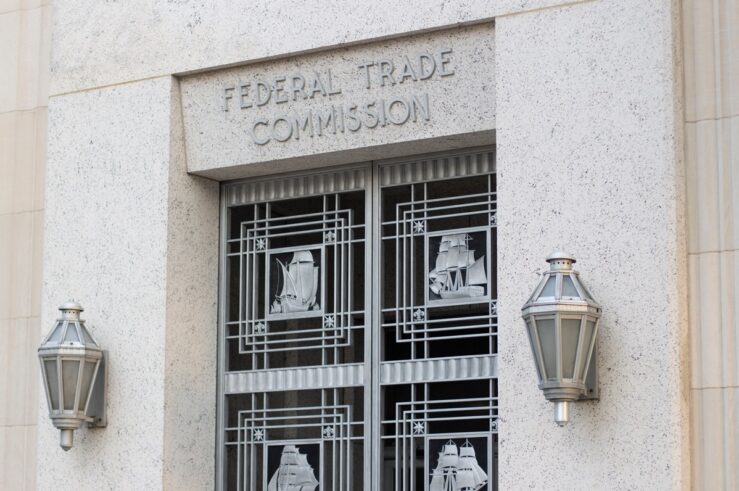This article is a part of the FTC Rulemaking on Unfair Methods of Competition symposium.
Over the past three weeks, we have shared contributions from more than a dozen antitrust commentators—including academics, practitioners, students, and a commissioner of the Federal Trade Commission—discussing the potential for the FTC to develop substantive rules using its unfair methods of competition (UMC) authority. This post offers a recap of where we have been so far in this discussion and also discusses what comes next for this symposium and our coverage of these issues.
First, I must express a deep thank you to all who have contributed. Having helped to solicit, review, and edit many of these pieces, it has been a pleasure to engage with and learn from our authors. And second, I am happy to say to everyone: stay tuned! The big news this week is that, after a long wait, Alvaro Bedoya has been confirmed to the commission, likely creating a majority who will support Chair Lina Khan’s agenda. The ideas that we have been discussing as possibilities are likely to be translated into action over the coming weeks and months—and we will be here to continue sharing expert commentary and analysis.
The Symposium Goes On: An Open Call for Contributions
We will continue to run this symposium for the foreseeable future. We will not have daily posts, but we will have regular content: a weekly recap of relevant news, summaries of important FTC activity and new articles and scholarship, and other original content.
In addition, in the spirit of the symposium, we have an open call for contributions: if you would like to submit a piece for publication, please e-mail it to me or Keith Fierro. Submissions should be 1,500-4,000 words and may approach these issues from any perspective. They should be your original work, but may include short-form summaries of longer works published elsewhere, or expanded treatments of shorter publications (e.g., op-eds).
The Symposium So Far
We have covered a lot of ground these past three weeks. Contributors to the symposium have delved deeply into substantive areas where the FTC might try to use its UMC authority; they have engaged with one another over the scope and limits of the FTC’s authority; and they have looked at the FTC’s history, both ancient and recent, to better understand what the FTC may try to do, where it may be successful, and where it may run into a judicial wall.
Over 50,000 words of posts cannot be summarized in a few paragraphs, so I will not try to provide such a summary. The list of contributions to the symposium to date is below and each contribution is worth reading both on its own and in conjunction with others. Instead, I will pull out some themes that have come up across these posts:
Scope of FTC Authority
Unsurprisingly, several authors engaged with the potential scope of FTC UMC-rulemaking authority, with much of the discussion focused on whether the courts are likely to continue to abide the U.S. Court of Appeals for the D.C. Circuit’s 1973 Petroleum Refiners opinion. It is fair to say that “opinions varied.” Discussion included everything from modern trends of judicial interpretation and how they differ from those used in 1973, to close readings of the Magnuson-Moss legislation (adopted in the immediate wake of the Petroleum Refiners opinion), and consideration of how more recent cases such as AMG and the D.C. Circuit’s American Library Association case affect our thinking about Petroleum Refiners.
Likely Judicial Responses
Several contributors also considered how the courts might respond to FTC rulemaking, allowing that the commission may have some level of substantive-rulemaking authority. Several authors invoked the Court’s recent “major questions” jurisprudence. Dick Pierce captures the general sentiment that any broad UMC rulemaking “would be a perfect candidate for application of the major questions doctrine.” But as with any discussion of the “major” questions doctrine, the implicit question is when a question is “major.” There seems to be some comfort with the idea that the FTC can do some rulemaking, assuming that the courts find that it has substantive-rulemaking authority under Section 6(g), but that the Commission faces an uncertain path if it tries to use that authority for more than incremental changes to antitrust law.
Virtues and Vices of Rulemaking
A couple of contributors picked up on themes of the virtues and vices of developing legal norms through rulemaking, as opposed to case-by-case adjudication. Aaron Neilson, for instance, argues that the FTC likely most needs to use rules to make bigger changes to antitrust law than are possible through adjudication, but that such big changes are the ones most likely to face resistance from the courts. And FTC Commissioner Noah Phillips looks at the Court’s move away from per se rules in antitrust cases over the past 50 years, arguing that the same logic that has pushed the courts to embrace a case-by-case approach to antitrust law is likely to create judicial resistance to any effort by the FTC to tack an opposite course.
The Substance of Substantive Rules
Several contributors addressed specific substantive issues that the FTC may seek to address with rules. In some cases, these issues formed the heart of the post; in others, they were used as examples along the way. For instance, Josh Sarnoff evaluated whether the FTC should develop rules around aftermarket parts and to address right-to-repair concerns. Dick Pierce also looked at that issue, along with several others (potential rules to address reverse-payment settlements in the pharmaceutical industry, below-cost pricing, and non-compete clauses involving low-wage workers).
Gaining Perspective
And last, but far from least, several contributors asked questions that help to put any thinking about the FTC into perspective. Jonathan Barnett, for instance, looks at the changes the FTC has made over the past year to its public statements of mission and priorities, alongside its potential rulemaking activity, to discuss the commission’s changing thinking about free markets. Ramsi Woodcock juxtaposes the FTC, the statutory framing of its regulatory authority, with the FOMC and its statutory power to directly affect the value of the dollar. And Bill MacLeod takes us back to 1935 and the National Industrial Recovery Act, reflecting on how the history of rules of “fair competition” might inform our thinking about the FTC’s authority today.
That’s a lot of ground to have covered in three weeks. Of course, the FTC will keep moving, and the ground will keep shifting. We look forward to your continued engagement with Truth on the Market and the authors who have contributed to this discussion.
- Introductory Post (Hurwitz)
- A Change in Direction for the Federal Trade Commission? (Spiwak)
- UMC Rulemaking After Magnuson-Moss: A Textualist Approach (Samuel)
- National Petroleum Refiners v. FTC: A Tale of Two Opinions (Barthold)
- Can the FTC Use Rulemaking to Change Antitrust Law? (Pierce)
- The Major Questions Doctrine Slams the Door Shut on UMC Rulemaking (May and Magloughlin)
- Chevron and Administrative Antitrust, Redux (Hurwitz)
- The FTC Abandons the Free Market (Barnett)
- FTC Rulemaking and Unintended Consequences (Nielson)
- NEW VOICES: FTC Rulemaking for Noncompetes (Fujii)
- Making Rules vs. Ruling (Woodcock)
- FTC Rulemaking Under UMC Could Mean Return of the National Nanny (Cernak)
- Rules Without Reason (Phillips)
- Regulating Competition at the FTC (MacLeod)
- How the FTC Could, but Won’t, Use Its Rulemaking Authority to Allow Aftermarket Parts (Sarnoff)




